Best 25 eCommerce Website Marketing Methods
From delivering multi-million pound eCommerce growth for hundreds of B2C and B2B retail websites across every industry under the sun from fashion to tech to furniture, we’ve distilled the very best website marketing methods we know that deliver stratospheric leaps in eCommerce sales.
1. Brand proposition
Warby Parker was founded with a rebellious spirit and a lofty objective: to offer designer eyewear at a revolutionary price, while leading the way for socially conscious businesses.
Having a brand proposition or a brand story is the number #1 most critical factor of success in making millions online. What does your brand offer that no other brand does? Me-too brands or “meh brands” as we like to call them, will struggle in the fiercely competitive world of online customer acquisition, without an original story.
The brand leading the pack of the Digital Native Vertical Brands (DNVBs) is Warby Parker. Their storytelling sums up what they do, how they do it differently and why you should buy from them in an incredibly succinct way.

2. Delivery and returns offer
According to Criteo’s eCommerce Outlook 2016, 96% of customers consider both same day delivery and next day delivery as fast delivery and 1 in 3 (37%) consider 3-4 days delivery as “Not fast shipping”, so speed of delivery is essential for online success.
The amount you set your free delivery offer at has a direct correlation with your average order value. So if you’re looking to up your AOV, set your free delivery to the amount you want.
Whilst you’re at it, make sure your returns policy is super-easy, effortless and clearly communicated alongside your delivery proposition.
3. Product page optimisation
Your eCommerce product pages are your one shot to let potential buyers know about the product you want them to fork out their hard-earned cash for, so the best investment you can make is in the continuous and never-ending development of your product pages.
If a furniture customer is looking for a sofa to fit in a particular space, not only do they need to know the exact dimensions of the sofa, but they also need to know whether the sofa will be delivered as one piece or several pieces so they can work out if it will fit through their narrow hallway.
- Put yourself in your ideal customers shoes and ask all the questions they might have, then answer them including:
- Sizes and dimensions
- Packaging
- Delivery, assembly and fitting
- Styles
- Colours
- Materials
- Care and usage instructions
- If you sell your products instore, get your store staff involved in uncovering what customers want to know.
- Use keyword research tools to find the phrases your customers use when they’re in the early research stages, as well as the later consideration and buying phases.
4. Product photography
Product photos are not only there to show your customers the product – ideally from a number of different angles. Your product photography is one of your best eCommerce website promotion methods as it’s the pictures of your product that are shared all over social media, appear in digital advertising campaigns and get covered in national media.
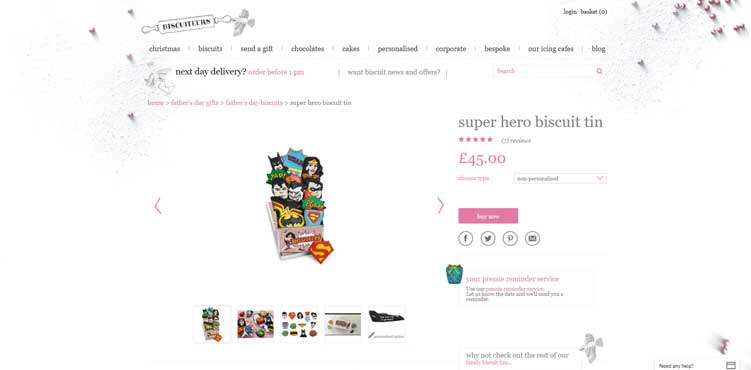
5. Product videos
More immersive than photos alone, product videos are fantastic at showcasing how your products move in the real world.
Particularly valuable for showcasing tech, fashion and travel experiences. You can embed videos on your product pages to drive up conversions, as well as share on the world’s second largest search engine, YouTube, to increase awareness when customers are looking to see how your products works.
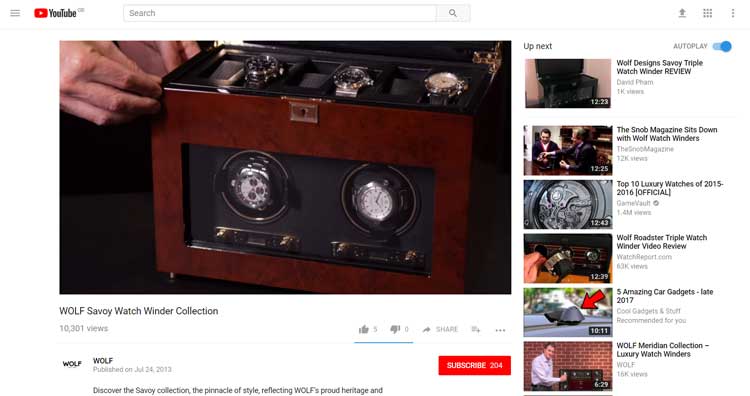
6. Category page optimisation
Probably the most under-utilised eCommerce website promotion methods of all time, category pages present sites with 1000s of products the most lucrative opportunity for growth.

With so many entry points for search engines, many online retailers fail to think about including any alternative ways of describing their main navigation categories. TVs are TVs right? Well, they’re also “televisions”, “smart TVs”, “4k TVs”, “50 inch TVs”, “oLED TVs”, “Samsung TVs”, “Sony TVs” and possibly even the “best TVs”.
The more category landing pages, the more opportunities to capture customers at the research stage and the faster you can grow by remarketing to them later.
7. Homepage merchandising
Put the hottest products that you want people to buy on your homepage.
Sounds straight forward but to maximise your revenue per visit, make sure you’re not giving your bargain bin items pride of place and instead let your newest, high value products shine.
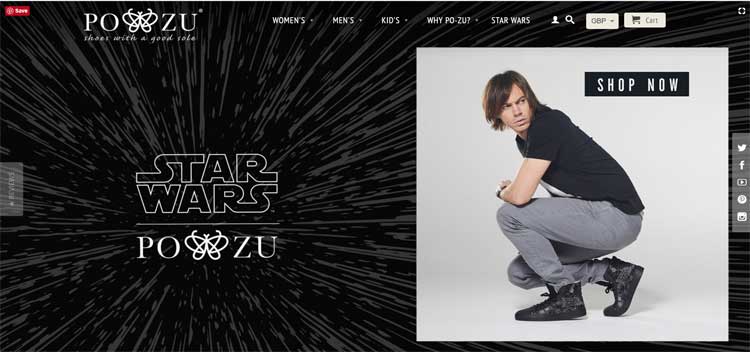
8. Email offer signup
Make sure you capture every possible visitor to your site with an email offer sign up box, whether they’re ready to buy or not, you can keep in touch with prospective and existing customers alike by getting them to opt-in to special offers from you.
A great new customer welcome offer, goes down a treat and even if they don’t use it straight away, you can continue to market to them through email marketing and social advertising remarketing campaigns to nudge them closer to becoming a customer.
9. Email marketing campaigns
With email marketing software like Mailchimp, you can keep in touch with different customer segments with personalised messages based on their previous purchase history.
Time to re-order campaigns are great for regular fast moving consumer goods purchases, or get the look style advice is very effective at encouraging fashionistas to keep subscribing.
The best place to start with email marketing is to keep it simple, start with a frequency you can maintain and whilst you may eventually get to sending several campaigns a week, a regular monthly or weekly campaign that adds value could represent around a fifth of your eCommerce turnover.
10. Facebook profile optimisation
You can reach billions of people world-wide with Facebook. So including your brand value proposition with your most lucrative keywords in your profile content so you come up in relevant searches, as well as regularly sharing product updates is the minimum you should be doing on the biggest social network in the world.
If you have Shopify, you can replicate your entire store within Facebook so you can make it even easier for customers to buy.
11. Instagram profile optimisation
Use your introductory bio snippet to full effect. Once you’ve claimed your brand name, use relevant hashtags to get found by new fans, post brilliant photos of how to wear or use your products and tag everything with keywords to suit your industry, location, audience and style.
12. Pinterest profile optimisation
Pinterest is perfect for driving up sales for fashion, homeware and food brands.
Just like you would consider naming your category pages using the most popular language for your audience, structure your boards using these popular keywords and your pins will get found in more searches.
13. Google My Business page optimisation
If you have physical store locations, then claiming your free Google My Business listing will help you reach more customers both online and offline.
You can allocate each of your store locations a number of set Google-approved categories and choose wisely, as these have a direct correlation against which keyword searches your site will be returned within local search results.
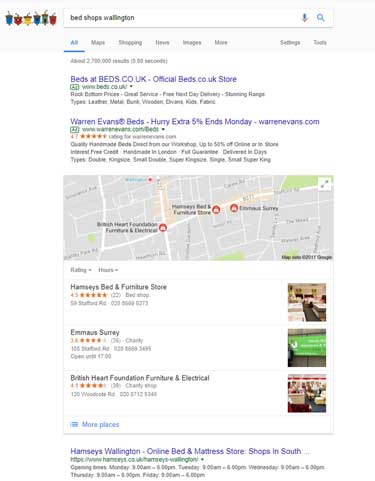
14. Bing Places page optimisation
Just like your Google My Business listing, claim your Bing listing and ensure your site comes up in any Bing searches both to drive traffic to your eCommerce website but this will also drive footfall to your store locations.
15. Apple maps page optimisation
Just like Google My Business or Bing Places but for all those avid Apple customers. Optimising your Apple Maps listing is particularly relevant if you’re selling any kind of tech or travel product, or have a high propensity for Apple users to be in your customer base (check out your Google Analytics Audience Devices Report if you’re not sure).
16. SEO metadata optimisation
As a specialist eCommerce SEO agency, page by page optimisation of title tags and meta descriptions is one of the critical steps in how we’ve delivered multi-million pound increases in eCommerce turnovers over the years.
Our award-winning ThoughtShift Dynamic Meta MethodologyTM starts by prioritising 60 characters worth of the most valuable keywords in each title tag. With a beautiful big-data style database packed with columns of product title, size, colour and style information we recommend creating dynamic product title tags for every product page.
Then painstakingly picking off every page, pulling out the top performing category and product pages to optimise each landing page’s meta for maximum sales by hand.
Even moving a keyword one word, can have an impact on ranking position. One word to the right, could drop your keyword ranking off of page 1 and moving one word to the left could be the difference between an organic number #1 and number #2 position in Google’s search engine results pages.
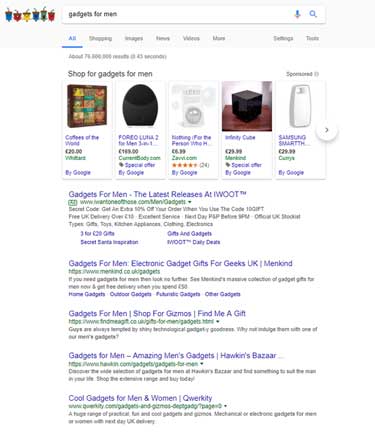
17. Social metadata optimisation
If you’ve ever found your products have broken images or odd descriptions when they get shared on social networks across Facebook, Instagram, Pinterest or Twitter, you need to optimise your OG (Open Graph) meta tags to make sure the snippet or image includes a relevant title, description and call to action.
Many of the common SEO plugins for WooCommerce, Shopify or Magento, like Yoast and All in One SEO include the ability to customise your social metadata on a dynamic sitewide or override on a page by page basis. Sometimes it can be as simple as a checkbox to enable automatic generation of your social OG tags.
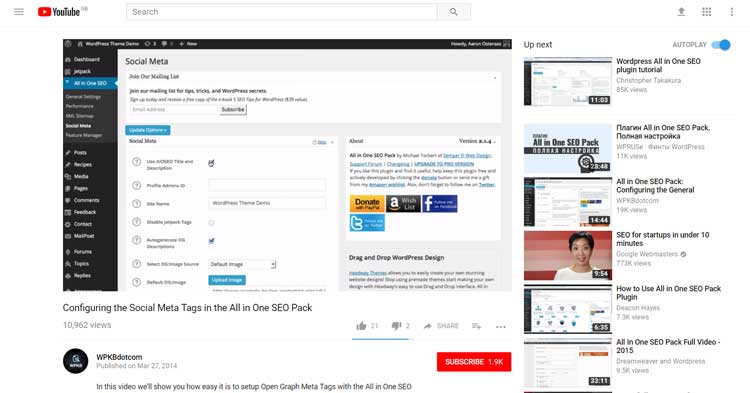
18. Influencer marketing
Once you’ve got your social media profiles optimised and your social metadata is firing on all cylinders, developing an influencer marketing campaign to create envangelising brand ambassadors to sing your praises or be seen wearing your products can help you to access all of their network.
Brand ambassadors could be an online street team that you give promotion incentives to or celebrity endorsements that start an online buzz about your brand.
19. Blogger outreach
Connecting with bloggers in your niche to offer them something of value to their readership not only increases your brand awareness to relevant audiences but the authority of their links can have a positive impact on your organic rankings.

Depending on your product and the reach of the blogger, the offer for coverage could be an authoritative guest post, a product gift for them to review or an exclusive invitation to experience your product.
20. Product reviews
Customer reviews can be the difference between winning the sale or not. With product reviews potentially appearing within product pages, Google Rich Snippets, Google Ad Seller Ratings and Bing Seller Ratings, cultivating product reviews should start as soon as possible.
Furniture manufacturer, Gopak, found Feefo reviews impacted their eCommerce marketing performance metrics in the following ways:
- Organic Traffic increase (year-on-year) of 245%
- Click Through Rate increase of 29%
- Cost Per Click decrease of 12%
- Bounce Rate decrease of 8%
- Conversion Rate increase of 6.7%
21. Facebook Advertising
With the ability to target previous customers and those on your email newsletter with personalised ads using Custom Audiences, Facebook Ads provide another opportunity to remarket your eCommerce website to existing customers.
Expanding to Lookalike Audiences overlaid with audience interests like TV shows, hobbies, sports and celebrities, means you can promote your products to brand new customers who are fans of Great British Bakeoff, Xfactor, TopGear or Master of Photography depending on what fits well with your brand.
The trick to generating high return on investment from Facebook Ads is not to go too big too soon. Whilst it seems counter-intuitive, gradually expanding to marginally wider lookalike audiences from your existing customer base is how we’ve driven Facebook Advertising ROI of 4,300%.
22. Instagram Advertising
Just like organic Instagram is super-relevant for travel, fashion, food, furniture and homeware brands, sprinkling a bit of paid Instagram Advertising can keep your brand front of mind when you have brilliant photo and video assets.
With sequential advertising based on setting up pixel tracking correctly, you can take potential customers on a storytelling journey from awareness, through to consideration, until they convert. Then to continue to build your customer base, you can display different communications after the conversion to encourage an upsell, cross-sell, review or other type of engagement to help you reach more of their network.
23. Google Shopping
Your eCommerce website should come with a product feed out of the box as standard, or should be relatively low cost to develop as you are essential extracting the product information into a big list of data including:
- Product title
- Product description
- Product price
- Product image
- Product link
Once you have your product feed, you can upload it into Google Merchant Center so that your products can be displayed in Google Shopping.
Google Shopping often has a lower cost per click than Google AdWords as there is less competition (not as many advertisers have eCommerce websites). Plus as the price is shown in the ad, customers who do click are more likely to convert as they have already seen how much the item costs and what it looks like.
Plus if you’ve got product reviews, these will be displayed in your Ad Seller Ratings in the form of a row of higher-conversion-inducing gold stars!
24. Bing Shopping
Yes Bing is still a thing!
48,143,375 Bing searches per day
Whilst you may not use the Bing search engine, according to Net Market Share, Bing has 7.3% of the global search engine market share (April 2017) which equates to over 48 million searches per day world-wide.
Optimising your product feed on Bing Shopping could be very lucrative for you if your target market is:
- Browsing at work or university – likely to have a locked down or enforced Microsoft environment such as within the IT, financial, professional or education industries
- An older demographic - more likely to use the IE default browser which automatically defaults to Bing search results on their home laptop or PC
Whilst the volume of searches is much smaller in comparison to Google Shopping, the competition can be dramatically lower so the sales volumes from Bing Shopping can punch way above it’s weight.
25. Content marketing
Now we’ve left this eCommerce website marketing channel to last, as content marketing can be the most powerful at driving eCommerce sales.
However, it takes the most effort to generate million of pounds in eCommerce revenue as it requires strategy and consistency.
Friendly advice blogs could be catastrophic for your brand
Your eCommerce content marketing strategy should be based on keyword research and any onsite blog pages should not directly compete with keywords you’ve optimised your category or product pages for.
Otherwise your friendly advice blogs could be catastrophic for your brand and end up outranking your buying pages (category and product pages) and whilst your traffic may well remain the same, you will obliterate your conversion rate overnight. Sending sales plummeting through the floor with no-one knowing why.
Keep sales safe and prioritise your category and product pages for your organic search engine optimisation and create your blog and offsite content marketing for storytelling and social media sharing where all routes lead back to your eCommerce website. Then, your strategic content marketing could go viral creating massive brand awareness and building lots of lovely valuable links back to your site at the same time to get your buying pages on page 1 in Google.
For the latest eCommerce marketing insights join the ThoughtShift Guest List and get our roundup of the best of our blogs delivered to your inbox each month, or ask us for a free eCommerce marketing review and analysis of your website.

